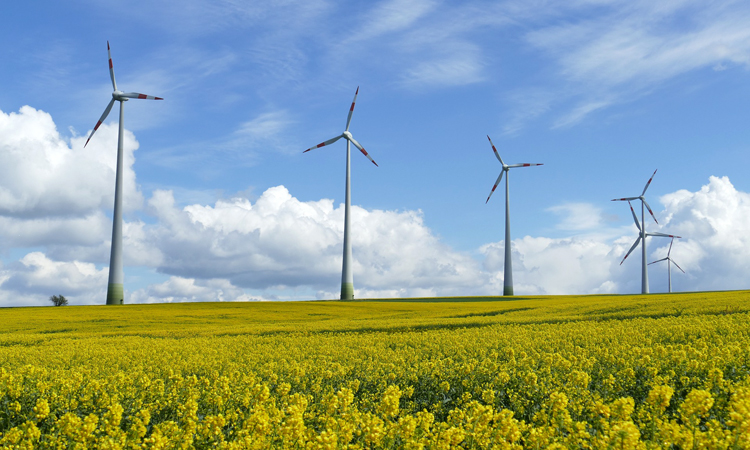INDIAN ARMED FORCES CHIEFS ON OUR RELENTLESS AND FOCUSED PUBLISHING EFFORTS

The insightful articles, inspiring narrations and analytical perspectives presented by the Editorial Team, establish an alluring connect with the reader. My compliments and best wishes to SP Guide Publications.

"Over the past 60 years, the growth of SP Guide Publications has mirrored the rising stature of Indian Navy. Its well-researched and informative magazines on Defence and Aerospace sector have served to shape an educated opinion of our military personnel, policy makers and the public alike. I wish SP's Publication team continued success, fair winds and following seas in all future endeavour!"

Since, its inception in 1964, SP Guide Publications has consistently demonstrated commitment to high-quality journalism in the aerospace and defence sectors, earning a well-deserved reputation as Asia's largest media house in this domain. I wish SP Guide Publications continued success in its pursuit of excellence.
- Operation Sindoor: Resolute yet Restrained
- India’s Operation Sindoor Sends a Clear Message to Terror and the World – ‘ZERO TOLERANCE’
- Japan and India set forth a defence cooperation consultancy framework, talks on tank and jet engines
- Terrorist Attack in Pahalgam in Kashmir: Unfolding a long surgical war against PAK
- Lt General Pratik Sharma takes over Command of Indian Army's Northern Command
Ukraine Crisis Could Trigger Cascading Risks Globally
The global spikes in energy and food prices resulting from these supply chain disruptions will see many countries struggle with rising food and energy insecurity as well as increased inequality
 |
The Author is Former Chief of Staff (COS), Central Command, Indian Army. He is an expert on Siachen and Ladakh with experience in counter insurgency operations in J&K and North East and is also an expert on Information Warfare. |

Russia and Ukraine rank globally 11th and 55th respectively, in terms of their national economies but, for the global supply of critical resources such as energy, food, and minerals, these two countries together are far bigger hitters – and both the threat and reality of resource flows from them being reduced have already driven up global prices.
The world is already facing a cost-of-living squeeze coming out of the COVID-19 pandemic, so further price spikes or supply constraints have the potential to seriously undermine food and energy security, equitable access to basic goods and services, and social stability around the world – which can then potentially create systemic risks for economies and societies.
The global implications of the Ukraine conflict are only just beginning to be explored fully but the immediate impacts of the crisis on global markets are already well-documented. In the first few days after Russia’s invasion, energy prices spiked, triggering further fertilizer price rises – as fertilizer production is highly energy intensive – which in turn is contributing to food price rises because fertilizer costs are an important factor in food production.
In the case of this conflict, the trade interruption will be far from small because, between them, Russia and Ukraine export around one quarter of all traded wheat, more than three quarters of traded sunflower oil and one sixth of traded maze
Interruptions to shipping in the region around Ukraine – as well as globally – have impeded the flow of goods which pushed prices up even further, while economic sanctions on cross-border flows of goods and finance are further adding to market pressures. But this is just the start – these impacts will bring ripple effects which propagate far beyond their point of origin, known as ‘cascading risks’.

Risk is a combination of hazard, exposure, and vulnerability – in terms of the Ukraine invasion, the hazard is the conflict and its immediate impacts on the societies and economies of Ukraine and Russia, while exposure relates to the degree to which other countries are likely to be affected depending on how much they are integrated into the global economy or the ‘just in time’ nature of their supply chains.
Vulnerability relates to a society’s capacity to mitigate the harmful impacts of the conflict, such as controlling borders, sourcing alternative goods from suppliers, or protecting against price or supply shocks.
Energy markets are also a concern because many countries use more energy than they produce and therefore rely on imports of energy or fuel for domestic use. Russia produces around ten per cent of the world’s commercial energy.
Risk cascades – the second- and third-order impacts of the original hazard and of responses to that hazard – can interact across sectoral boundaries – as with energy and food, for example – and their compound effect can lead to overall systemic risks for society. Anticipating this potential is essential to understanding the nature and scale of the global ramifications being felt from the Ukraine conflict.
Interruptions to the flows of goods and energy
In globalised trade networks, localised disruption to supply chains rapidly yields widespread international impacts – of particular concern is the immediate supply of food because most countries rely on lean supply chains and some may only have a few days food within their own borders. Experience from previous food price crises indicate even small interruptions to trade can result in runs on the market and rapid price inflation. In the case of this conflict, the trade interruption will be far from small because, between them, Russia and Ukraine export around one quarter of all traded wheat, more than three quarters of traded sunflower oil and one sixth of traded maze.
Energy markets are also a concern because many countries use more energy than they produce and therefore rely on imports of energy or fuel for domestic use. Russia produces around ten per cent of the world’s commercial energy with a concentration of sales in major regions such as the European Union (EU) and China.
As with food, a shortfall in energy provision leads to market runs and rapid inflation as actors compete in a tightening space, while poorly designed policy interventions by nations trying to ensure their own security add further pressure to global supply and worsen price rises. In addition, the closely interconnected nature of energy markets means disruption to one fuel – such as gas in this case – affects global prices for other forms of energy.
The impact of moving people and money
As the last decade richly illustrates, the cross-border flows of people impact those societies absorbing them – for example, contributing to a rise in nationalism – as well as increase the costs of supplying essential resources. Given many people are understandably fleeing this conflict, other countries may struggle to cope as the cost-of-living crisis and urgent efforts to bolster national security infrastructure may squeeze available public funds.
The impact on governance and health
The global spikes in energy and food prices resulting from these supply chain disruptions will see many countries struggle with rising food and energy insecurity as well as increased inequality. Taken together these conditions create many issues beyond immigration pressures and the associated politics, including increased inequality and civil unrest.

This potentially destabilizes governments which has consequences for the stability of an entire region such as interrupted supply chains, the need to deploy peacekeeping forces, or significant flows of aid – all with global consequences far beyond the countries in question.
Populations may suffer mental health impacts arising from the Ukraine invasion, whether from the trauma of being forced to leave home to escape conflict, anxiety for the wellbeing and safety of families and friends caught up in it, or a more general anxiety arising from the perception of living in an unstable world.
Given many people are understandably fleeing this conflict, other countries may struggle to cope as the cost-of-living crisis and urgent efforts to bolster national security infrastructure may squeeze available public funds
The conflict in Ukraine is great potential trigger of all these impacts, and the devastating potential for cascading risk through these pathways is rapidly becoming clear. With unprecedented shortfallsin wheat exports from China because of extreme rainfall combined with interruptions to exports from Ukraine and Russia – the risk to societies around the world will be greatly magnified.
As the impacts of the Ukraine conflict on food markets, energy markets, logistics, and people movement emerge, policymakers and commentators must not overlook how these impacts coincide and cascade, crossing sectoral and country borders, and affecting populations in a myriad of ways.
The real risk lies not in disruptions to one given sector or supply chain, but in the potential for these disruptions to interact in a globalised world to create wider systemic disorder.





